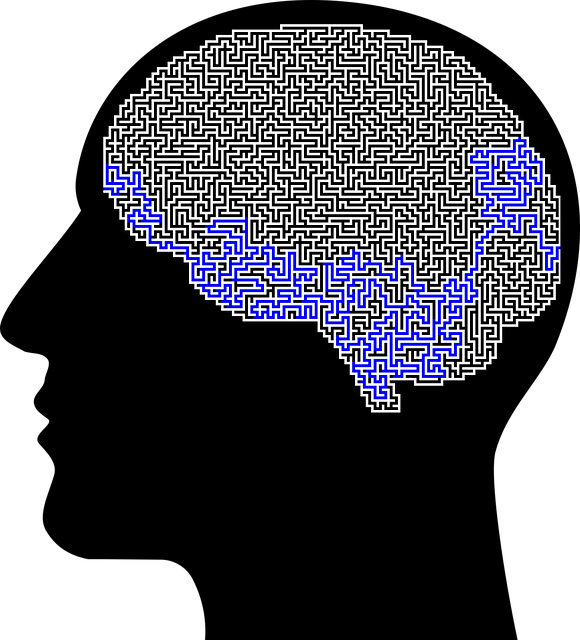Burnout among healthcare providers is a growing concern, impacting well-being and patient care quality. Caused by prolonged exposure to stressful environments, signs include irritability, fatigue, and decreased productivity. Multifaceted causes include excessive workload, lack of control, insufficient reward, and poor work-life balance. Greenwood Village Cognitive Processing Therapy (GVCPT) offers valuable stress management techniques and trauma processing to combat burnout. Integrating GVCPT into healthcare practices enhances job satisfaction and mental health, aligning with Mental Health Policy efforts. Cultural Competency Training and Mental Wellness Coaching further support providers' well-being and resilience in high-pressure environments.
Healthcare provider burnout is a growing concern, impacting both professionals’ well-being and patient care. This article explores effective strategies to prevent burnout, focusing on the powerful role of Cognitive Processing Therapy (CPT), as championed by Greenwood Village. We delve into recognizing burnout signs and causes, offering comprehensive solutions for improved healthcare provider resilience and overall well-being. By understanding CPT’s impact, healthcare organizations can foster a culture that prioritizes mental health and prevents professional exhaustion.
- Understanding Burnout: Recognizing the Signs and Causes
- Cognitive Processing Therapy (Greenwood Village Approach): A Powerful Tool for Resilience
- Comprehensive Strategies for Healthcare Provider Well-being and Burnout Prevention
Understanding Burnout: Recognizing the Signs and Causes

Burnout among healthcare providers is a growing concern, impacting both individual well-being and patient care quality. It’s essential to recognize burnout as a legitimate issue stemming from prolonged exposure to stressful work environments. Healthcare professionals often juggle heavy workloads, demanding patients, and administrative tasks, leading to emotional exhaustion, depersonalization, and reduced personal accomplishment—the three core dimensions of burnout.
Signs of burnout can manifest in various ways, including increased irritability, fatigue, cynicism towards work, and decreased productivity. The underlying causes are multifaceted, encompassing factors like excessive workload, lack of control over work processes, insufficient reward and recognition, and poor work-life balance. For instance, Greenwood Village Cognitive Processing Therapy offers valuable techniques to manage stress and process traumatic experiences that may contribute to burnout. Additionally, Healthcare Provider Cultural Competency Training and Mental Wellness Coaching Programs Development can equip professionals with the tools to navigate challenging situations, improve resilience, and enhance overall mental wellness.
Cognitive Processing Therapy (Greenwood Village Approach): A Powerful Tool for Resilience

Cognitive Processing Therapy (CPT), pioneered by the Greenwood Village approach, has emerged as a powerful tool in burnout prevention for healthcare providers. This therapeutic intervention focuses on modifying unhelpful thought patterns and behaviors, helping professionals cultivate resilience against stress and emotional exhaustion. CPT encourages individuals to challenge and reframe negative or distorted cognitions that can contribute to burnout, thereby promoting mental wellness.
By integrating CPT into their practice, healthcare organizations can support staff in navigating the demanding nature of their work. This therapy equips professionals with coping strategies to manage stress effectively, enhance job satisfaction, and improve overall mental health. In alignment with broader Mental Health Policy Analysis and Advocacy efforts, integrating CPT into the healthcare landscape underscores a commitment to supporting provider well-being and ensuring sustainable service delivery. Moreover, its potential to prevent burnout can be explored through production of engaging Mental Wellness Podcast Series, reaching a wider audience with valuable insights on maintaining resilience in high-pressure environments.
Comprehensive Strategies for Healthcare Provider Well-being and Burnout Prevention

Healthcare providers often find themselves at the forefront of emotional and physical demands, which can lead to burnout if left unaddressed. Implementing comprehensive strategies is essential for maintaining healthcare provider well-being and preventing burnout. One effective approach is integrating Greenwood Village Cognitive Processing Therapy (GVCPT) into their practice. GVCPT helps professionals manage stress, process traumatic experiences, and improve coping skills, all of which contribute to enhanced resilience and reduced burnout risk.
Additionally, fostering cultural sensitivity in mental healthcare practice plays a significant role. Understanding and adapting therapeutic approaches to accommodate diverse patient backgrounds can create safer and more effective treatment environments. Encouraging the development of self-care routines, including mindfulness practices and regular exercise, further supports healthcare providers’ mental health. Moreover, coping skills development should be prioritized, equipping professionals with tools to navigate challenging situations and maintain work-life balance.
In addressing healthcare provider burnout, a multifaceted approach is essential. By understanding the signs and causes of burnout through recognizing its impact on both individuals and the broader healthcare system, we can implement effective strategies such as the Greenwood Village Cognitive Processing Therapy (GVCPT). Adopting comprehensive GVCPT-inspired solutions empowers providers to enhance resilience, improve work-life balance, and ultimately, ensure better patient care. Preventative measures are key; by prioritizing provider well-being, we can create a more sustainable and compassionate healthcare environment.














